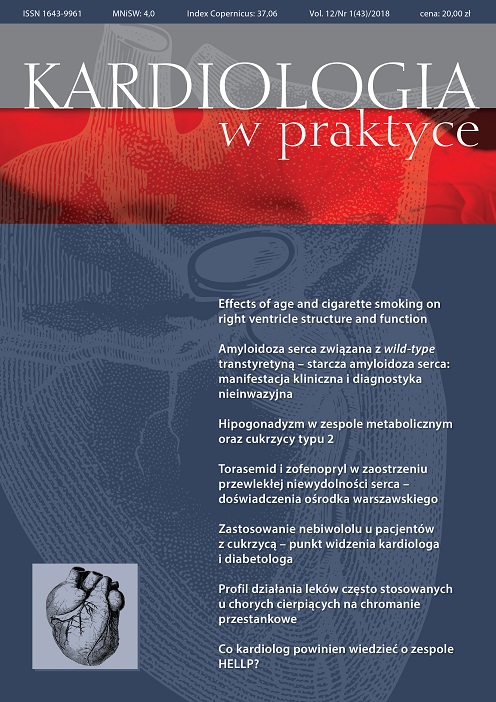Action profile of drugs often used in intermittent claudication Review article
Main Article Content
Abstract
Intermittent claudication is a symptom that significantly affects the quality of life of patients. It most often occurs in the course of obstruction of peripheral arteries and affects 5% of men and 2.5% of women over 60 years of age. Treatment consists of improving the blood flow through narrowed arteries. We currently achieve this effect either through vasodilatation and suppression of smooth muscle proliferation or by improving rheological parameters of the blood. In both cases, the beneficial vascular effect may be associated with adverse effects on the body. The paper presents specific adverse reactions and interactions of both methods of treatment of intermittent claudication.
Downloads
Article Details

This work is licensed under a Creative Commons Attribution-NonCommercial 4.0 International License.
Copyright: © Medical Education sp. z o.o. This is an Open Access article distributed under the terms of the Attribution-NonCommercial 4.0 International (CC BY-NC 4.0). License (https://creativecommons.org/licenses/by-nc/4.0/), allowing third parties to copy and redistribute the material in any medium or format and to remix, transform, and build upon the material, provided the original work is properly cited and states its license.
Address reprint requests to: Medical Education, Marcin Kuźma (marcin.kuzma@mededu.pl)
References
2. Dawson D.L., DeMaioribus C.A., Hagino R.T. et al.: The effect of withdrawal of drugs treating intermittent claudication. Am. J. Surg. 1999; 178(2): 141-146.
3. Bedenis R., Stewart M., Cleanthis M. et al.: Cilostazol for intermittent claudication. Cochrane Database Syst. Rev. 2014; (10): CD003748. http://doi.org/10.1002/14651858.CD003748.pub4.
4. Fernandes J.L., de Oliveira R.T., Mamoni R.L. et al.: Pentoxifylline reduces pro-inflammatory and increases anti-inflammatory activity in patients with coronary artery disease – a randomized placebo-controlled study. Atherosclerosis 2008; 196(1): 434-442.
5. Prasad K., Lee P.: Suppression of hypercholesterolemic atherosclerosis by pentoxifylline and its mechanism. Atherosclerosis 2007; 192(2): 313-322.
6. Atabek M.E., Kurtoglu S., Selver B., Baykara M.: Effectiveness of pentoxifylline on the cross-sectional area of intima media thickness and functions of the common carotid artery in adolescents with type 1 diabetes. J. Pediatr. Endocrinol. Metab. 2011; 24(11-12): 945-951.
7. Han S.J., Kim H.J., Kim D.J. et al.: Effects of pentoxifylline on proteinuria and glucose control in patients with type 2 diabetes: a prospective randomized double-blind multicenter study. Diabetol. Metab. Syndr. 2015; 7: 64.
8. Champion S., Lapidus N., Cherié G. et al.: Pentoxifylline in heart failure: a meta-analysis of clinical trials. Cardiovasc. Ther. 2014; 32: 159-162.
9. Charakterystyka produktu leczniczego Decilosal (cylostazol) z 24.10.2013 r. ze zmianami z 17.01.2014 r.
10. Charakterystyka produktu leczniczego Polfilin prolongatum (pentoksyfilina) z 31.05.2013 r.

